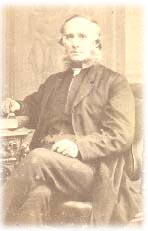Manners for the Victorian Gentleman

"The old saying that it takes two generations to make a gentleman is being refuted every day, for Americans are remarked not only for their facility in amassing fortunes but in furnishing themselves with presentable manners on short notice"
Correct Social Usage, 1903
"It is the duty of a gentleman to know how to ride, to shoot, to fence, to box, to swim, to row and to dance. He should be graceful. If attacked by ruffians, a man should be able to defend himself, and also to defend women from their insults"
Rules of Etiquette and Home Culture. 1886
"Keep up appearances whatever you do"
Charles Dickens in Martin Chuzzlewit, 1843
The following web pages will endeavor to give a rough notion of what was expected of 19th Century American Gentlemen, as presented in etiquette books, with a leavening of how they really behaved, as presented in the works of foreign observers and social commentators.
The 19th Century was a time of tremendous social and economic flux. The Industrial Revolution created a consumer economy and a huge middle class with the means of purchasing consumer goods. This new middle class felt that they had arrived at a higher social plane of existence. The social norms of the farm and the tenement would not do for the family of a man who had made his way in the world.
The new middle class wanted to purchase appropriate manners, just as they could purchase fashionable homes, stylish clothing or the latest domestic gadget. From the 1850s on, the market was flooded with etiquette books which laid out to people who had never been exposed to such things, the rules of "polite society". In many cases, they also did not describe 19th Century America as it was, but as the author hoped it could become.
Ironically, these rules were based upon the norms of the 18th Century European aristocratic society which the middle class had supplanted and rendered obsolete -- and tended to disdain for its decadence and effeminacy.
These changes were taking place throughout the European and American world, but in America, an additional dynamic was present. 19th Century Americans were keenly aware of the uniqueness of their democratic institutions and society, and many saw the manners of "polite society" as contrary to the egalitarian nature of America. Hifaluten manners were a thing of the decadent Old World. This often manifested itself in loud, coarse and rough behavior and downright rudeness--especially on the part of the have-nots towards the haves. Anyone who wore a top hat had to be ready to patiently endure the "I'm as good a man as you" reception he might get from every white porter, cab driver, sailor and ditch digger he might encounter.
There was a gradual shift here however. As the century wore on, the norms of the middle class diffused throughout society, and "coarse behavior" became far less the norm in 1900 than it was in 1800. By the 20th Century, a watered down version of middle class manners had become the property of the entire society, which led in the years following the First World War, to a general informalization of manners, with Victorian notions of social ritual being tossed out in favor of a more "modern" and less clearly delineated approach to behavior.
The manners of the 19th Century, as expressed in etiquette books, do contain many elaborate social rituals which seem a bit quaint to us moderns, but the vast majority of their space is devoted to what would seem to be common sense rules like "Don't chew with your mouth open" or "Don't interrupt people" or "Don't be a lot of bother when you are a house guest". Two things may be drawn from this. First, there must have been a lot of people back then (just as there are today) who lacked "common courtesy" and needed to be told such things, and second, if you wish to portray a refined 19th Century American, just do the things your mama taught you, and you are more than half way there already. Perhaps the rest of this website will help get you over the other half.
"The true gentleman is one who has been fashioned after the highest models...his qualities depend not on fashion or manners but upon moral worth--not on personal possessions but upon personal qualities"
Happy Homes and the Hearts that Make Them, 1882
A few related links
